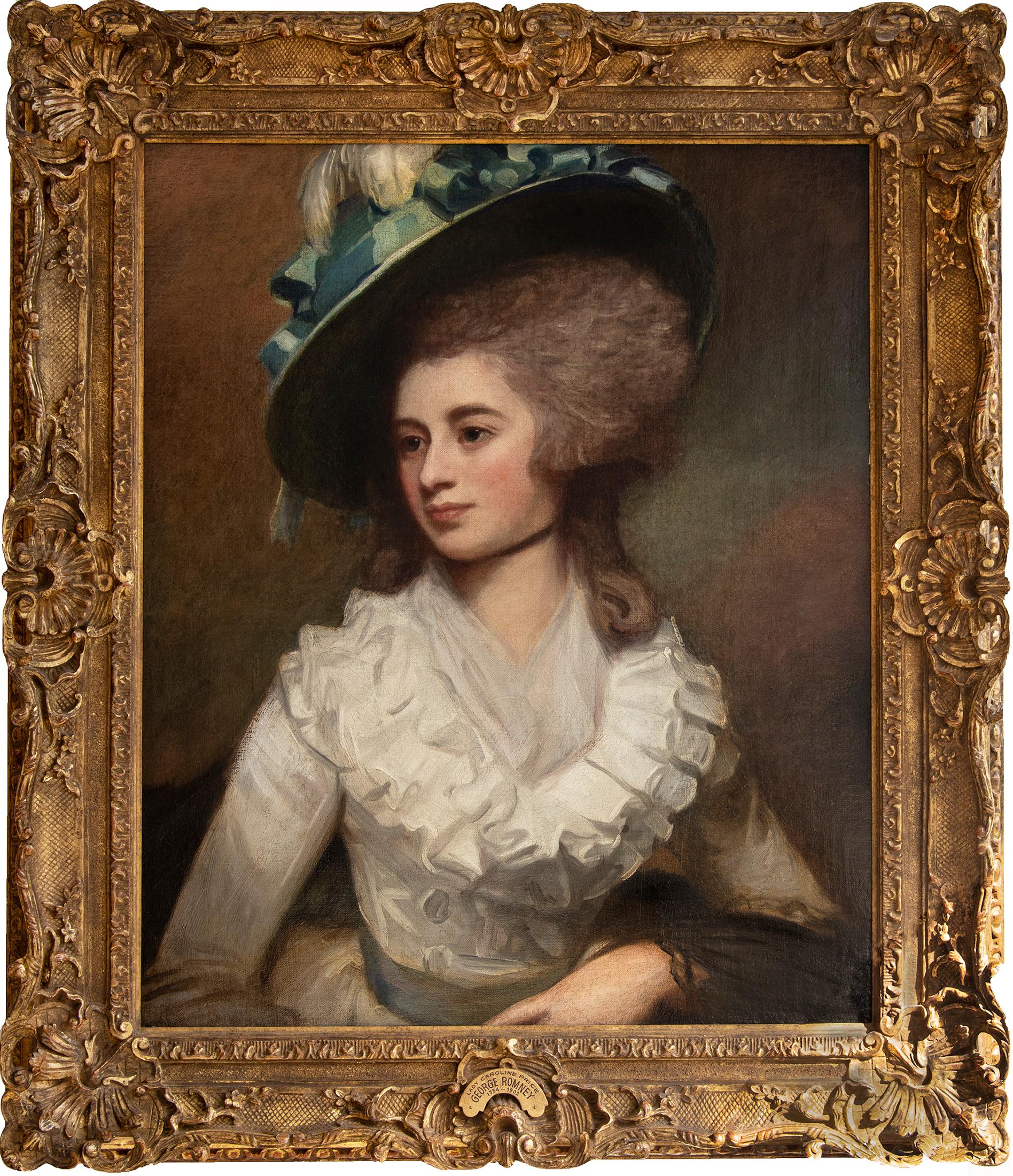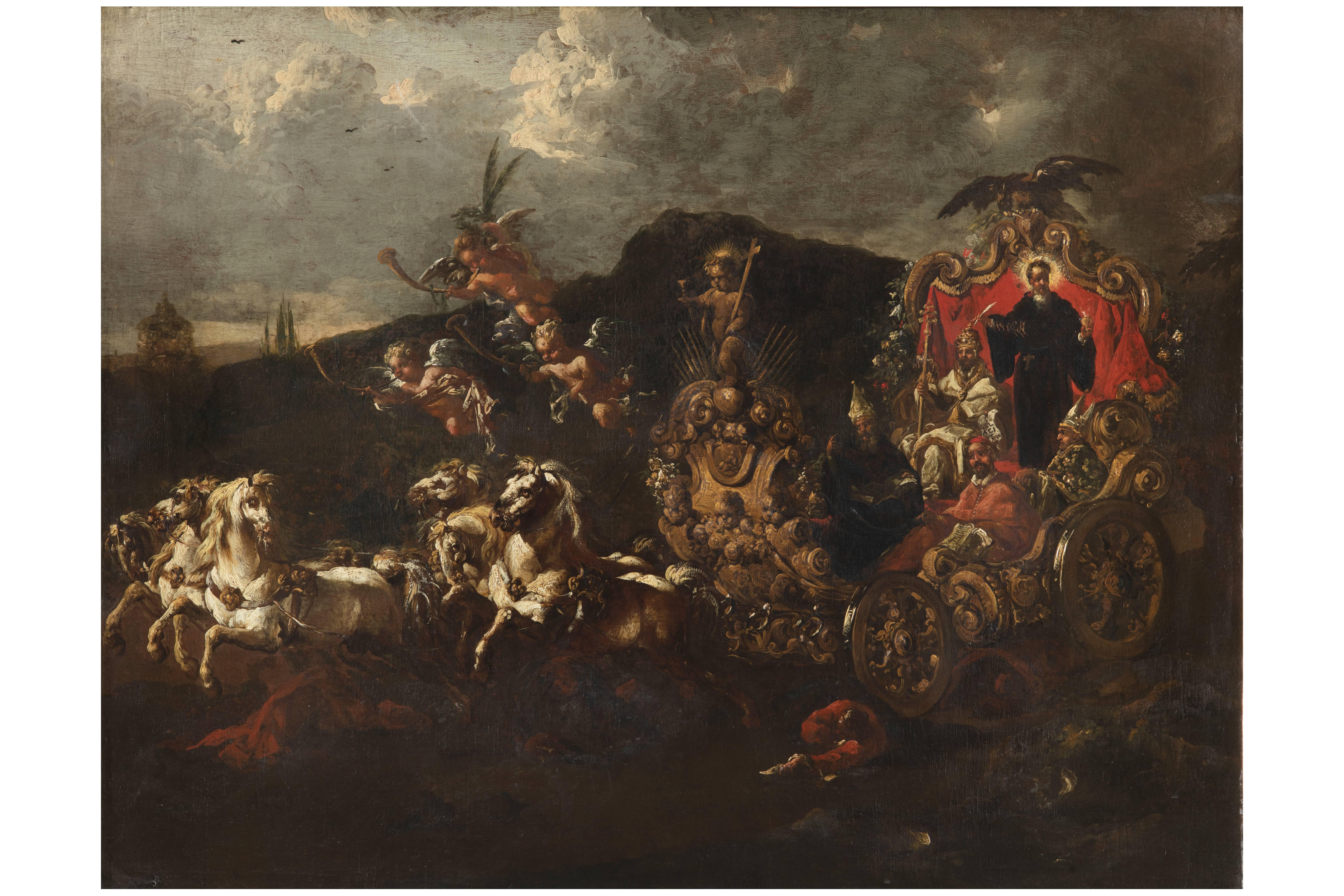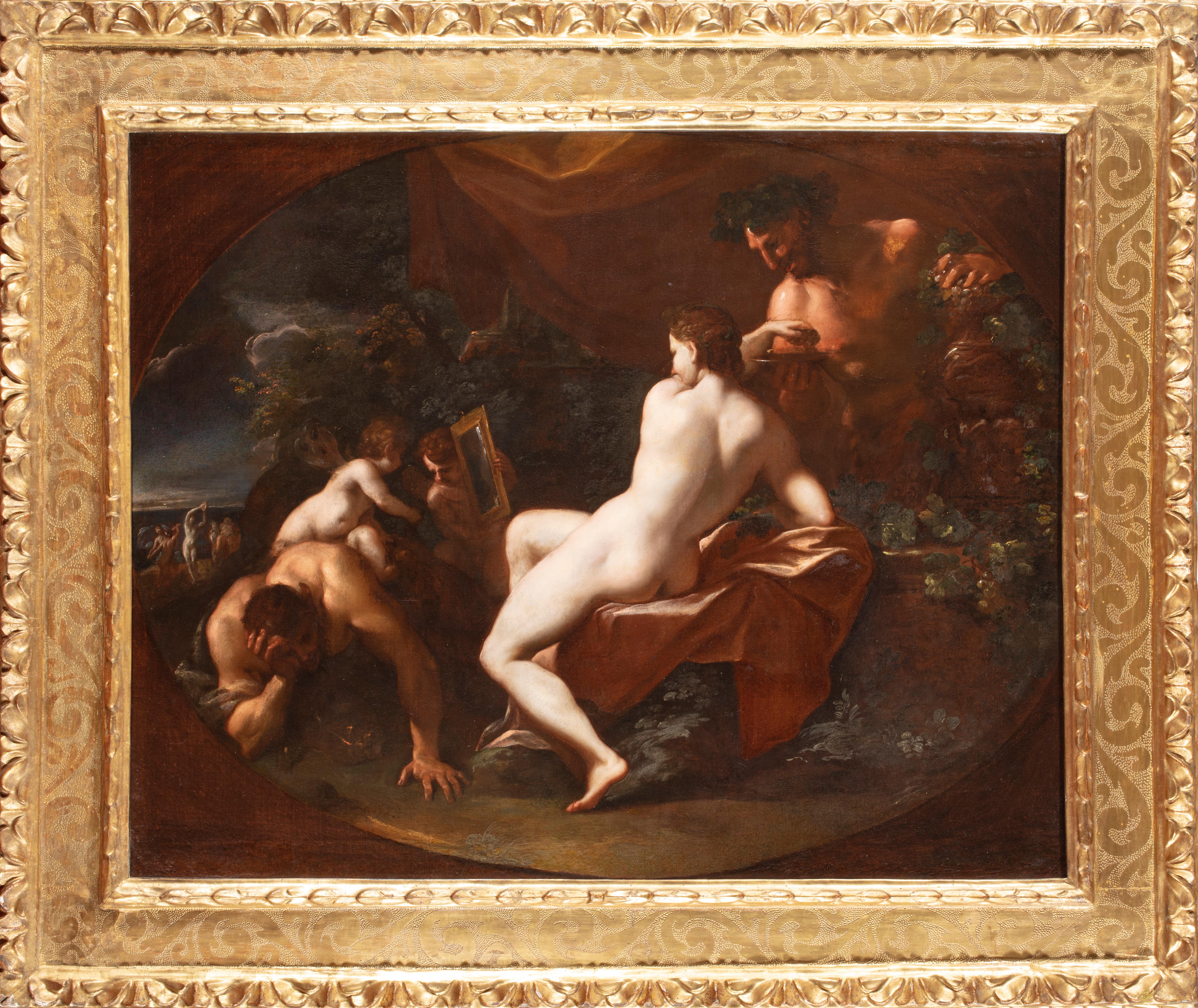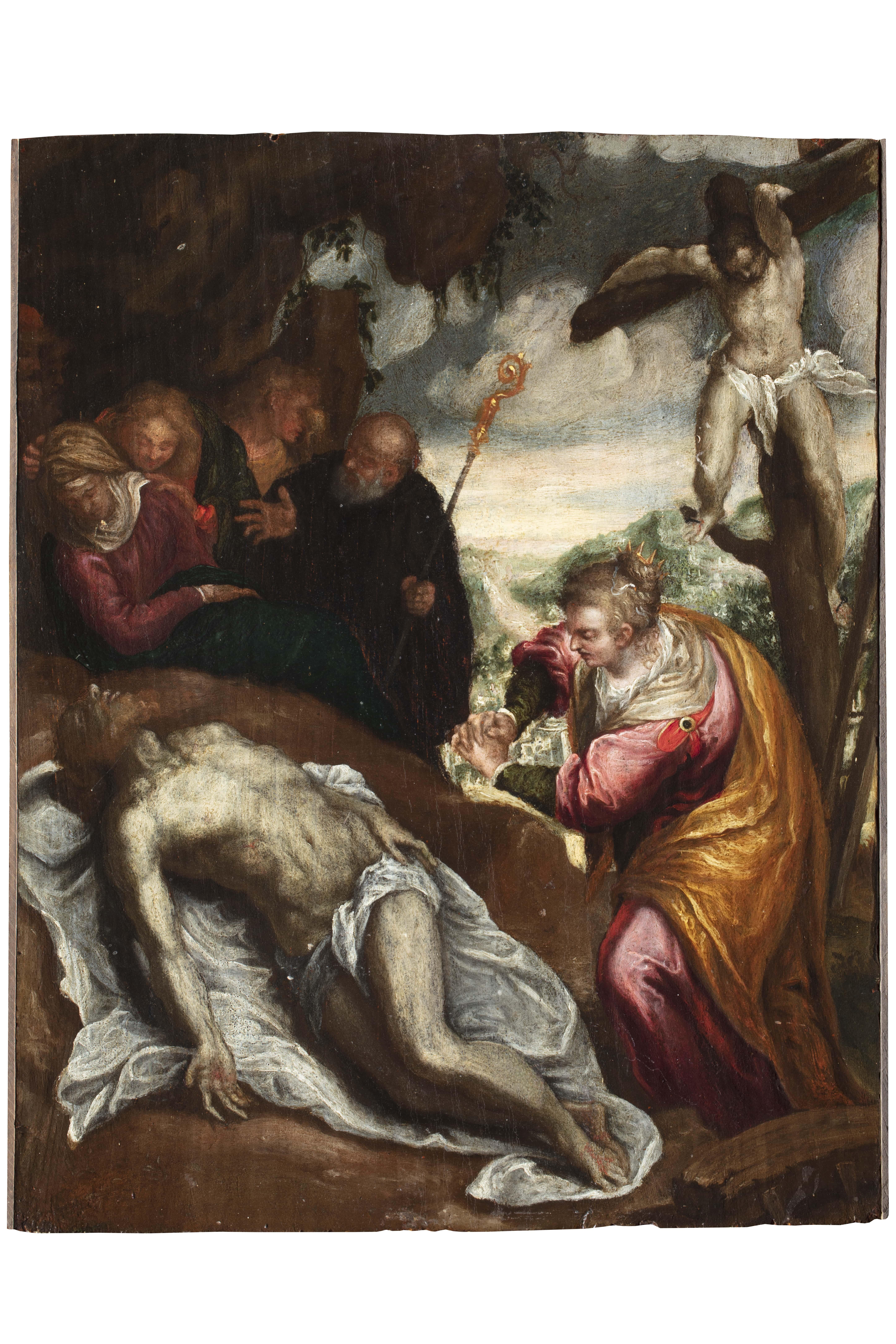Items Similar to Early 18th Century Oil After Francis Wheatley, The Taming of The Shrew
Want more images or videos?
Request additional images or videos from the seller
1 of 5
UnknownEarly 18th Century Oil After Francis Wheatley, The Taming of The Shrew 1800
1800
About the Item
After Francis Wheatley, circa 1800
The Taming of the Shrew
Oil on canvas; held in a period style frame. Dimensions refer to size of frame
Artists and patrons in the eighteenth century responded to and encouraged the assertion of Shakespeare as Britain’s foremost national playwright. Through the remarkable efforts of David Garrick, the actor and Drury Lane theater manager, the plays flourished on the stage, while the promotion of the playwright as the “immortal bard” was seized as an opportunity to foster a British school of history painting.
Combining commerce and connoisseurship, entrepreneurial publishers like John “Alderman” Boydell and James Woodmason commissioned works such as a scene from Twelfth Night by Johann Heinrich Ramberg, and Francis Wheatley’s scene from The Two Gentlemen of Verona, respectively, creating what amounted to a new genre: the Shakespearean conversation piece. Strategies of representation included the depiction of famous actors and actresses in favored roles, such as Benjamin van der Gucht’s portrait of actor Henry Woodward in the role of Petruchio in David Garrick’s adaptation of The Taming of the Shrew, and James Northcote’s portrait of the child actor William Henry West Betty in the role of Hamlet.
Such was the popularity of these paintings and others like them, the engravings that were produced sold enthusiastically thus inspiring and influencing thousands. Francis Wheatley’s original picture of the Taming of the Shrew was exhibited in 1789 with the engraving reaching a wider audience in 1795. This painting presented here dates to around this period and is a confident and skilled version.
The scene is from Act II scene II - ‘Baptista’s house. Petruchio, Katherine, Bianca, &c.’
Pet. But for my bonny Kate, she must with me, / Nay, look not big, nor stamp, nor stare, nor fret: / I will be master of what is mine own; / She is my goods, my chattels; she is my house, / My household-stuff, my field, my barn, / My horse, my ox, my ass, my any thing; / And here she stands, touch her whoever dare: / I’ll bring my action on the proudest he / That stops my way in Padua. Grumio, / Draw forth they weapon, we’re beset with thieves; / Rescue thy mistress, if thou be a man: / Fear not, sweet wench, they shall not touch thee Kate; / I’ll buckler thee against a million.
- Creation Year:1800
- Dimensions:Height: 26.5 in (67.31 cm)Width: 32 in (81.28 cm)Depth: 3 in (7.62 cm)
- Medium:
- Movement & Style:
- Period:
- Condition:
- Gallery Location:London, GB
- Reference Number:
About the Seller
No Reviews Yet
Vetted Seller
These experienced sellers undergo a comprehensive evaluation by our team of in-house experts.
1stDibs seller since 2019
9 sales on 1stDibs
- ShippingRetrieving quote...Ships From: London, United Kingdom
- Return PolicyA return for this item may be initiated within 14 days of delivery.
More From This SellerView All
- Charles Jervas, Portrait of Joseph MellishBy Charles JervasLocated in London, GBCharles Jervas (1675-1739) Portrait of Joseph Mellish (1675-1733) Oil on canvas; held in a carved period frame Dimensions refer to size of frame. Provenance: Blyth Hall, Nottinghamshire, England; by descent to Sir Andrew Buchanan of Hodsock Priory, Nottinghamshire In 1635 John Mellish, a merchant tailor of London, bought the estate of Blyth in Nottinghamshire. His son, a wealthy Oporto merchant, dying unmarried, left Blyth in 1703 to a cousin, Joseph Mellish, who became one of Newcastle’s earliest and most important political supporters in the county. He went up to Clare College, Cambridge in 1692 and on to the Inner Temple the following year. He married Dorothea Gore, daughter of Sir William Gore...Category
Early 18th Century Old Masters Portrait Paintings
MaterialsOil
- 18th century oil portrait of Margaret Peg Woffington by Jeremiah DavisonLocated in London, GBMargaret 'Peg' Woffington, was born in Dublin around 1714. Her charm and beauty as a child attracted much attention quickly resulting in her first stage role at the precocious age of 10. Her first important appearance was as Ophelia in 1737 in Dublin, followed by her greatest role, the male part of Sir Harry Windair in Farquhar's Constant Couple, which in 1740 led to her engagement by John Rich...Category
Mid-18th Century Old Masters Portrait Paintings
MaterialsOil, Canvas
- Henry Pickering, Portrait of a GentlemanBy Henry PickeringLocated in London, GBHenry Pickering, Portrait of a Gentleman Oil on canvas; signed and dated 1759; held in a giltwood period frame Provenance: Lenygon & Morant Ltd. c.1900; Knoedler, October 1912 (Sto...Category
Mid-18th Century Old Masters Portrait Paintings
MaterialsOil
- Follower of Samuel de Wilde, Portrait of an Actor in CharacterLocated in London, GBFollower of Samuel de Wilde c.1841 Portrait of an Actor in character. Oil on canvas; held in a period gilded frame. Dimensions refer to size of ...Category
19th Century Baroque Portrait Paintings
MaterialsCanvas, Oil
- Mather Brown (1761-1831) Portrait of Major-General John Robinson (1757-1819)By Mather BrownLocated in London, GBMather Brown (1761-1831) Portrait of Major-General John Robinson (1757-1819) Oil on canvas; held in a period giltwood frame Provenance: Denston Hall, Suffolk and by descent Literature: Suffolk Portraits, mss by Edmund Farrer, 1921. Vol. 5 (West Supp), entry 230, no.4 – NPG Heinz archive. John Robinson was a third generation professional soldier, whose father was a Lt.-Colonel. He joined the army in 1773 and was Captain by the time he married Rebecca Clive, daughter of “Clive of India” in March 1782. This family connection helped him immeasurably in his political ambitions as a seat in Parliament became available whilst his brother-in-law Edward, Lord Clive was in India. The portrait presented here was completed around 1805 when Robinson was a Major-General. This is confirmed by evidence that surrounds an incomplete portrait by George Romney of his late wife Rebecca. Unfinished at the time of Romney’s death, the painting remained unpaid for and unclaimed. On 25th March 1805, William Saunders, a framer, who had been looking after the work wrote to the artist’s son John Romney...Category
Early 19th Century Romantic Portrait Paintings
MaterialsOil
- 19th Century Framed Floral Painted PanelLocated in London, GBA late nineteenth century polychrome painted panel, depicting a foliate and ornithological arabesque upon a white ground. Oil on panel, set within an ebonised frame.Category
Late 19th Century Baroque Animal Paintings
MaterialsOil, Board
You May Also Like
- 18th Century by Giuseppe Bonito The Painter's Studio or Allegory of PaintingLocated in Milano, LombardiaGiuseppe Bonito (Castellammare di Stabia, 1707 - Naples 1789) The Painter's Studio or Allegory of Painting Oil on canvas, cm.40,5 x 64 - with frame cm....Category
Mid-18th Century Old Masters Figurative Paintings
MaterialsCanvas, Oil
- 17th Century by Giuseppe Assereto Portrait of an Elderly Woman Oil on CanvasBy Giuseppe AsseretoLocated in Milano, LombardiaGiuseppe Assereto (Genova - 1626 ca – Genova 1656/57) Portrait of an elderly woman, possible portrait of Maddalena Massone, wife of Gioacchino Assereto Oil on canvas, cm. 65,5 x 51,5...Category
Early 17th Century Old Masters Portrait Paintings
MaterialsCanvas, Oil
- Portrait of Lady Caroline PriceBy George RomneyLocated in Miami, FLDESCRIPTION: Perhaps the best Romney in private hands. If Vogue Magazine existed in the late 18th century, this image of Lady Caroline Price would be ...Category
1970s Old Masters Portrait Paintings
MaterialsCanvas, Oil
- 17th Century By Livio Mehus Allegory of Augustinian Order Oil on CanvasLocated in Milano, LombardiaPublications: - Expertise by Prof. Sandro Bellesi; - S. Bellesi, in Barocco spaziale: dialoghi di luce, forma, colore fra pittura barocca e spazialismo, catalogo della mostra a cura...Category
17th Century Old Masters Figurative Paintings
MaterialsCanvas, Oil
- 17th Century By Domenico Maria Canuti Toilet of Venus with Cupids and SatyrsLocated in Milano, LombardiaDomenico Maria Canuti (Bologna 1626 - 1684) Toilet of Venus with Cupids and Satyrs Oil on canvas, cm. 79x98 - with frame cm. 102x121 Original gilded wo...Category
Late 17th Century Old Masters Figurative Paintings
MaterialsCanvas, Cotton Canvas, Oil
- 16th Century by Venetian Maestro Deposition of Christ Oil on PanelLocated in Milano, LombardiaFormerly Canesso Collection, Paris. Publications: Bozzetti, modelletti, sketches: dalla collezione di Giorgio Baratti (From the Giorgio Baratti Collection) curated by Anna Orlando, ...Category
16th Century Old Masters Figurative Paintings
MaterialsOil, Wood Panel
Recently Viewed
View AllMore Ways To Browse
1809 Art
Early Eighteenth Century
Old Master Picture
The Immortals
Horse Painting Old Masters
Oil Painting 1800
Oil Portrait Francis
Brown Betty
Two Gentlemen
18th Century Oil Genre Paintings
Oil Paintings Of Old Barns
Horse Paintings 18th
Ox Painting
Mistress Painting
18th Century Horse Paintings
1800 Oil Painting Portrait
Antique Barn Painting
Brown Old Mine





